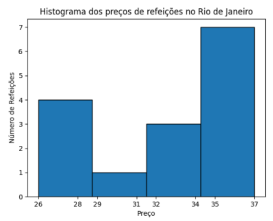Questões de Concurso Público TCU 2022 para Auditor Federal de Controle Externo
Foram encontradas 100 questões
Essa determinação de suspensão das atividades da fábrica:
A reforma, além de deliberada por dois terços dos competentes para gerir e representar a fundação e não contrariar ou desvirtuar o fim da fundação, deve ser:
No tocante ao provimento jurisdicional que reconheceu a prescrição, é correto afirmar que se trata de:
Tendo sido informada, na peça contestatória, a precedente tramitação do mandado de segurança, o juiz da nova causa, após o oferecimento da réplica autoral, deve:
Sobre o tema, é correto afirmar que:
Sobre o tema, é correto afirmar que:
Sobre o tema, é correto afirmar que:
Sobre a hipótese e a aplicação da Lei nº 12.846/2013, é correto afirmar que:
O intervalo de 95% de confiança para a quantidade de processos favoráveis no terceiro ano é:
O teste a ser usado e o valor da sua estatística de teste são, respectivamente:
O histograma a seguir mostra a quantidade de refeições para
cada faixa de preço, em uma determinada área do Rio de Janeiro.

O conjunto de dados consistente com o histograma é:
O teste a ser usado pelo presidente e o valor da estatística de teste são, respectivamente:
As previsões de demanda nos meses 6 e 12 são, respectivamente:
ATENÇÃO!
Na próxima questão, considere as tabelas de banco de dados T, TX e DUAL, exibidas com suas respectivas instâncias a seguir.
T



O comando SQL utilizado nessa atualização é exibido a seguir.

O número de registros da tabela T afetados pela execução do comando SQL acima é:
ATENÇÃO!
Na próxima questão, considere as tabelas de banco de dados T, TX e DUAL, exibidas com suas respectivas instâncias a seguir.
T




O comando SQL que produz o resultado acima, a partir da instância inicialmente definida para a tabela T, é:
ATENÇÃO!
Na próxima questão, considere as tabelas de banco de dados T, TX e DUAL, exibidas com suas respectivas instâncias a seguir.
T



(1) select * from dual where x = null (2) select * from dual where x <> null (3) select * from dual where x > 10 (4) select * from dual where not x > 10 (5) select * from dual where x > 10 union select * from dual where x <= 10
Se os resultados desses comandos fossem separados em grupos homogêneos, de modo que em cada grupo todos sejam idênticos e distintos dos elementos dos demais grupos, haveria: